Media | Articles
LdN Overdrive: The British invention that let the world’s drivers enjoy highways
Tough?
”You’d better believe it,” says Tom Cox, transmission expert at Pete Cox Sportscars, where he works along with his father.
“We had one customer who lent his racing Triumph TR6 to a friend for a race at Brands Hatch. He didn’t really understand what an overdrive was all about and at maximum revs at the end of the pit straight, he simply clicked it out before Paddock Hill bend. The gearbox instantly saw about 9000 rpm; we did the maths. It completely detonated. There wasn’t anything salvageable, but the overdrive, well, that was fine. We took it apart and put it back together—nothing wrong at all.”
Tough, then, but also ingenious and ubiquitous, the Laycock de Normanville (LdN) overdrive might sound a bit like the transmission equivalent of the Duckworth-Lewis equation, but while it’s not as good at determining the result of a rained-off cricket match, it’s quite brilliant at reducing stress on you and your car when highway cruising.
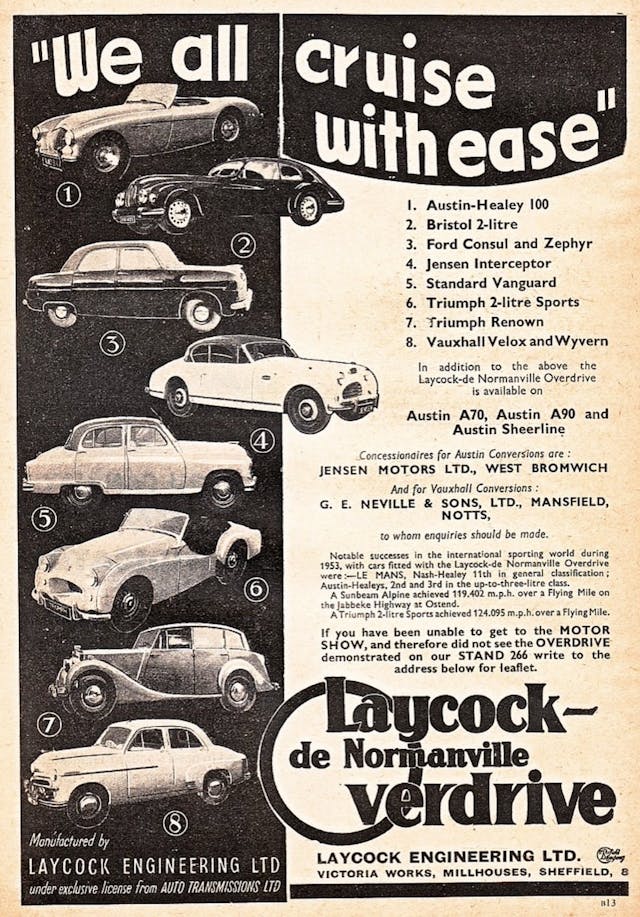
It was invented in 1948 by Edgar de Normanville, an engineer, inventor, and motoring correspondent for The Motor magazine and The Daily Express. He’d already designed a four-speed epicyclic transmission for Humber when he came up with the similarly geared two-speed overdrive unit, which was built by Laycock Engineering in Sheffield. The LdN overdrive was one of a variety of overdrive units, including those from BorgWarner and Fairey, but it was by far the most popular, with an estimated 3.5 million units built over a 40-year period. LdN overdrives saw service on a variety of cars of the 1950s, ’60s, and ’70s: Jaguars, Land Rovers, Rovers, Bristols, Austin-Healeys, MGs, Triumphs, Volvos, AMCs, Chevrolets, and even a Ferrari, the 250 GT 2+2.
Marketplace
Buy and sell classics with confidence
An overdrive unit is essentially a two-speed mechanically/hydraulically activated epicyclic gear system, which is shaped like a misshapen football and bolted to the back of the gearbox driving the propellor shaft. Overdrive simply means gearing that provides a tall enough ratio to enable the output shaft of the gearbox to spin faster than its input. Think of the engine “over driving” the propellor shaft.
So why did cars need overdrives at all? Post-WWII motoring marked a profound change; more middle-class motorists bought cars and traveled farther on very different roads. There were just 383,525 cars on the road in 1923, over a million in 1930, more than 2.5 million by 1950, and just under 5 million in 1960. To enable motorists to travel farther faster, in the 1950s the UK government undertook a program of mass road building to enable a 20th century car-based economy. Britain’s first dual carriageway had opened at the London end of the Great West Road in 1925, but the 1950s and ’60s saw their widespread adoption. In December 1958, the Preston Bypass, Britain’s first-ever motorway, was opened by Prime Minister Harold Macmillan, who quoted Robbie Burns: “I’m now arrived—thanks to the gods! Thro’ pathways rough and muddy. A certain sign that makin’ roads is no this people’s study.”
The following year, the first stretch of the M1 opened and cars subjected to the stresses of fast, continuous use on these new roads required a rethink. Better engine bearings, for instance, which could survive that stress, as well as improvements to cooling, better suspension and tires, and lower cruising revs. With sufficient torque from the engine, fitting an overdrive meant that cars and trucks with longitudinally mounted engines and three- and four-speed gearboxes could drive on these long, straight roads with the engine turning at lower revolutions, which reduced fuel consumption, component wear, noise, and vibration.
Of course, there was always the option of an over-driven fifth gear, which does much the same thing as an overdrive unit, and that’s exactly where we’ve ended up today with five- and six-speed gearboxes, which reduce the gearing to improve emissions and fuel consumption. In the 1950s and ’60s, however, a five-speed gearbox could be problematic. Designing and manufacturing a five-speed is neither simple nor cheap; witness today where carmakers often hand off their transmission business to firms such as BorgWarner, Dana, Getrag, Voith, Aisin, or ZF and therefore effectively share the cost with other manufacturers.
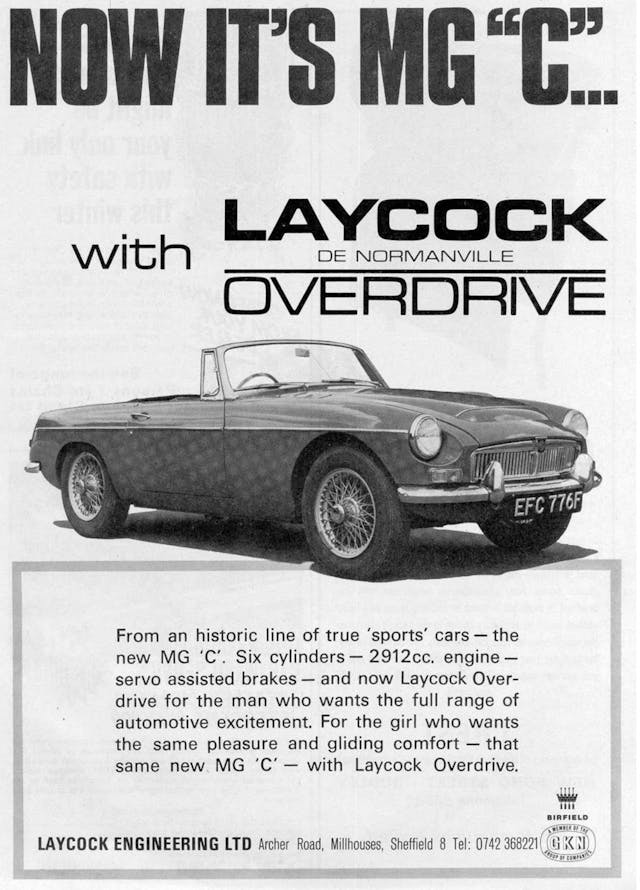
And, as James Brearley, engineer and director of Overdrive Repair Services in Sheffield says: “That fifth speed would sit at the back of the gearbox, and would need a method to engage it with different shift rods and forks, and there often isn’t the space to accommodate them at the rear of the ‘box.”
So, for the more outward-bound motorist, an overdrive unit it was. And what are those mysterious parts that fill the misshapen football at the back of the gearbox? The basic overdrive parts are the pump, which runs off the gearbox output shaft to build hydraulic pressure, and the solenoid, which opens a valve and allows high-pressure oil to reach the operating pistons, which in turn bear on a cone clutch that locks the epicyclic gearing and engages the taller overdrive ratio.
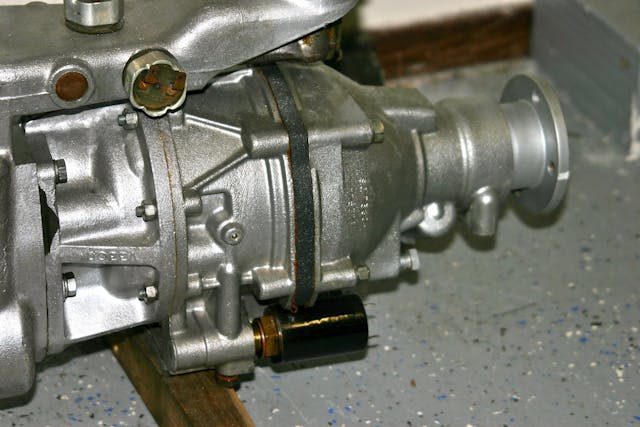
Although the epicyclic movement of the planets was described in Greek literature and used to illustrate the orbits of those planets, it took the industrial revolution for a generation of engineers to appreciate the benefits of epicyclic gearing: high-speed transmission reduction, with low vibration and relatively low cost.
An epicyclic gear system comprises one or more outer planet gears revolving around a central, or sun, gear, with the planet gears mounted on a carrier, which rotates relative to the sun gear. It’s ingenious and efficient and strong, but complex. I rebuilt the gearbox of my old Triumph, but entrusted the overdrive to a specialist, reckoning it was a load of voodoo engineering.
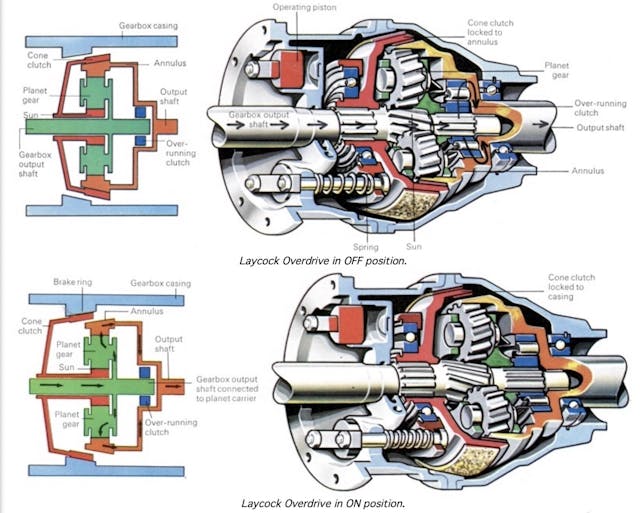
“Yes, there is a certain amount of voodoo in there,” admits Brearley, “though the operating principles are fairly straightforward. They all had their own way of building pressure.”
Initially the LdN overdrive was produced as an A-Type unit. “It has a hydraulic pump unit which built up to 340 to 550psi,” explains Brearley. “That stored pressure, when released, pushed the cone clutch into the brake ring, which stopped the sun gear and sent the drive round the epicyclic gears. In the earliest days the overdrive was controlled by a mechanical lever. The 12-volt solenoid came later.”
Brearley says the A-Type unit had a couple of different ratios, expressed as the percentage reduction in engine revs for a given speed: 22 percent for most Triumphs and 28 percent for Jaguars and Austin-Healeys.
By around 1972, the old A-Types were replaced by the J-Type, which had a slightly different mounting system (more to the rear of the car) and different overall gearing drop. Internet warriors rage about the relative strengths of the A versus J, the latter having smaller gears, fewer moving parts, different hydraulics, which subject the gears to less force, and more accessible hydraulics when mounted in the car.
Different vehicle applications have different adaptor plates and output shafts, and there were also special application overdrives: D-Types for early Triumphs, MGBs, and Hillmans; LH Types for MGBs and Ford-engined vehicles such as the Zephyr and Reliant Scimitar; and the P-Types, which were the last built and fitted to Volvos, keeping the faith in the trusty overdrive by taking over a million units from Laycock.
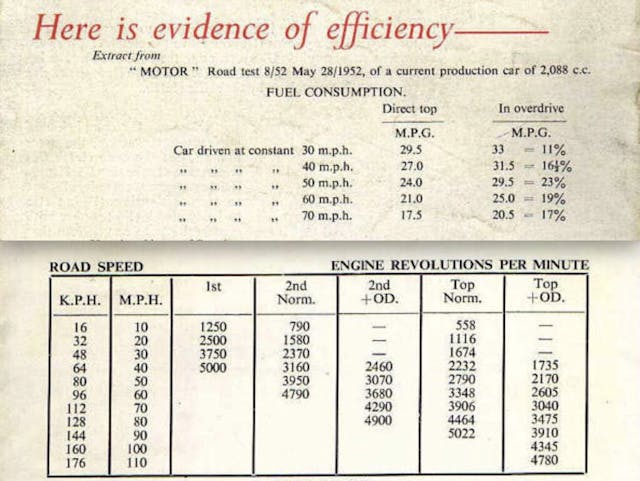
There were other advantages of the overdrive, too, not least that of providing additional ratios, especially the early A-Type units, which would operate on second, third, and fourth gears. This effectively gave the early TRs seven forward ratios, although third overdrive was so close to fourth as to be practically the same. And some applications, such as the Triumph GT6, gave no advantage in lower engine revs since the £58 special-order overdrive on the 1966 two-seat coupé gave a 0.802 overdriven ratio on third and fourth gears. But it was also accompanied by a final-drive ratio change from 3.27:1 to 3.89:1, which not only required a speedometer gear change but also effectively gave the same overall gearing—about 21 mph per 1000 rpm—as the standard four-speed model. So, in this case, the overdrive unit gave substantially better acceleration through the gears over the non-overdrive car.
My own experience is that an LdN overdrive is a reliable if slightly leaky device, and most problems stem from the wiring to the solenoid and neglect of the gearbox oil. Overdrive Repair Services’ Brearley concurs, but says that there are issues with side plates, which come under incredible forces, or the A-Type adaptor plates, which see the same from hydraulic and spring pressure. “It’s unbelievable the pressure those plates have to stand up to, and they bend and crack, so we’ve made up our own stronger items,” he says.
It’s a similar story with linings for the cone clutch, which have had to be remanufactured over the years. Original linings had asbestos content and the new, non-asbestos linings have slightly more grippy characteristics, which means faster and more brutal engagement, which some customers don’t like.

“The clutch has to stop that inertia at quite high engine revs,” says Brearley, “and there’s a slip time which includes the clutch travel and the return rate. If you allow too much slip time, the material can get quite hot quite quickly, so we have to be quite careful. The difference between the clutch thudding in like a ton of bricks and slipping too much can be as little as five-thousands of an inch adjustment.”
There’s also the thorny subject of the right lubrication for the gearbox and overdrive, which share common oil. All are agreed that the most modern GL5 gear oils should be avoided as they can attack some white and yellow metal bearing material. Older GL4 lubricant can be used, but advice from Duckhams, the TR Register, and Pete Cox is a straight mineral-oil SAE 40, changed regularly and with cleaned filters at the same time.
Compact five-speed gearboxes and transverse engines put paid to the bulky overdrive, and Laycock closed down in 1970s. “It was a brutal process,” says Brearley. “Specialist machines worth hundreds of thousands and endless overdrive units all went in the skip.” Overdrive Repair Services was born out of that closure and formed by former Laycock engineer Joe Winter in 1986, building on the winding down of Laycock’s repair and spares service. His son Paul joined the company soon after along with Peter Eggington, another former Laycock engineer. “We’re not the only firm looking after Laycock overdrives,” says Brearley, “but we like to think we do a good job.”
It’s easy to see overdrives as heavy and complicated sources of potential breakdown, but however it alters the gearing, in the end, an overdrive is a brilliant driver’s aid in an older car. For overtaking, accelerating, and holding a ratio between corners, it has no equal, and that flip of the switch on the steering column (or the gear lever) which engages the voodoo and fires the engine’s revs up or down in the blink of an eye, is one of the great pleasures of an old car.
***
Check out the Hagerty Media homepage so you don’t miss a single story, or better yet, bookmark it. To get our best stories delivered right to your inbox, subscribe to our newsletters.
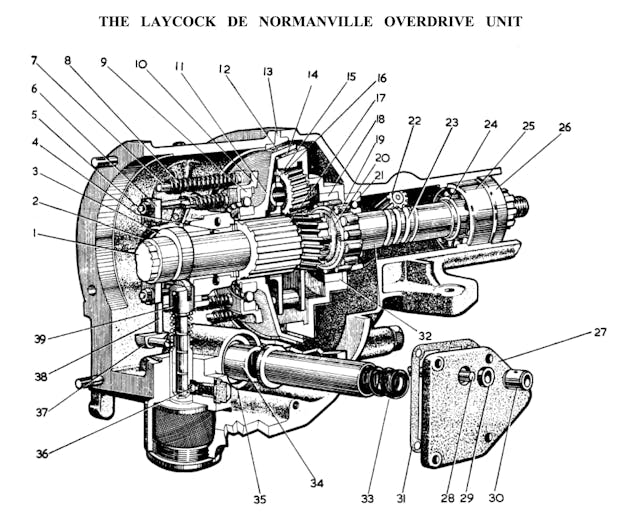
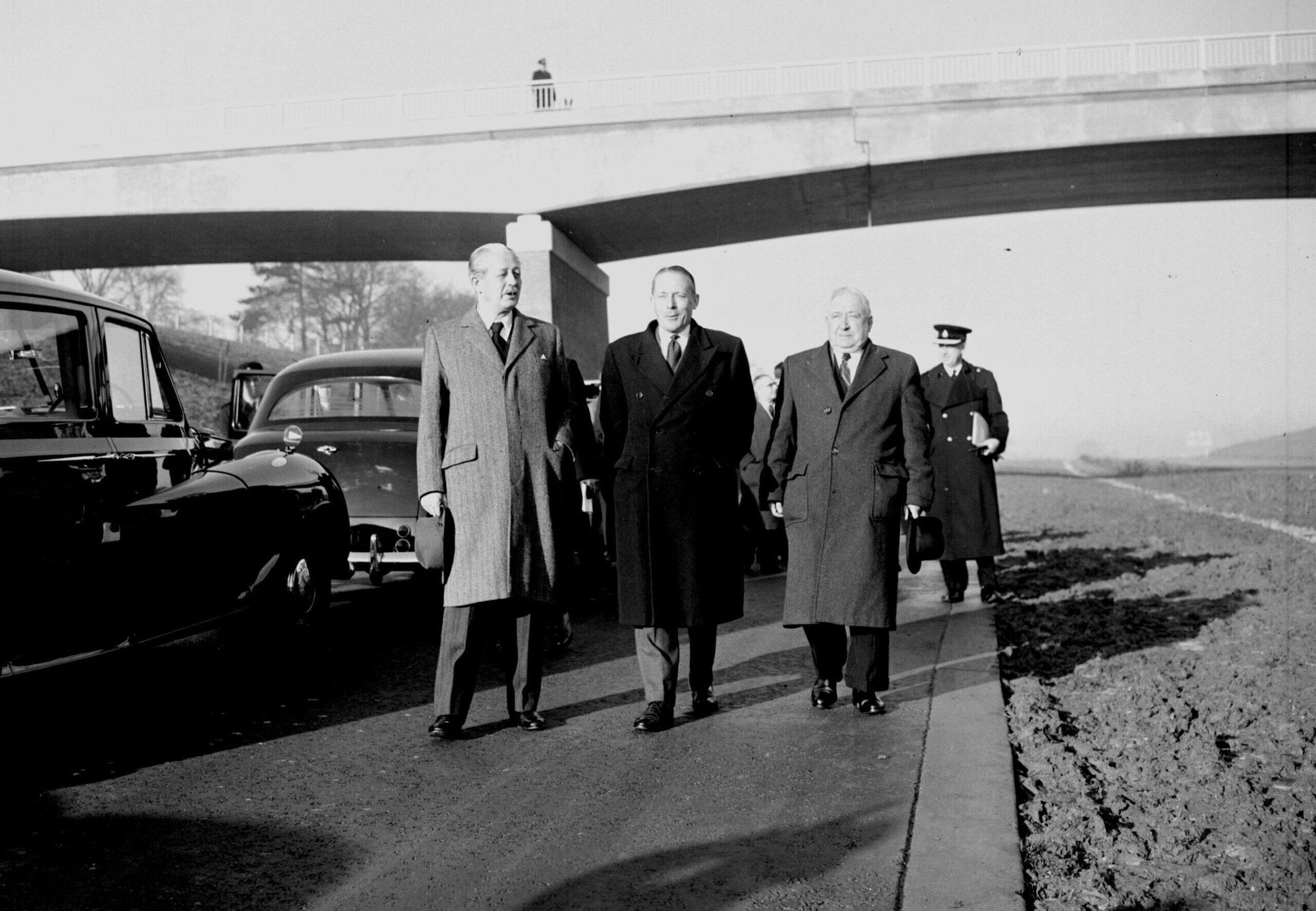
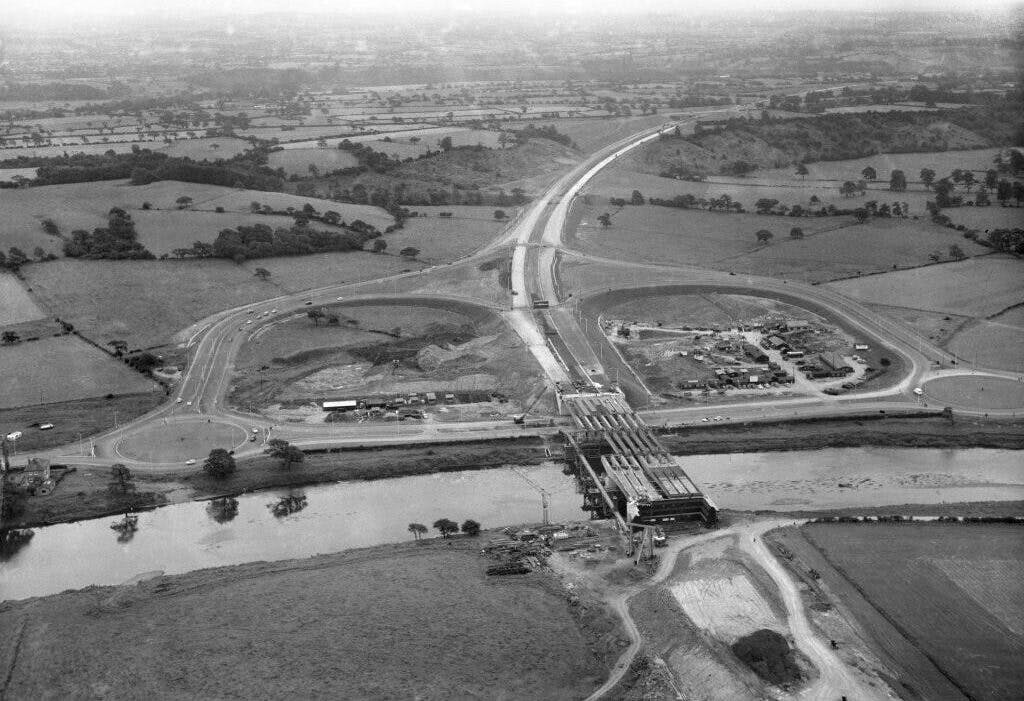
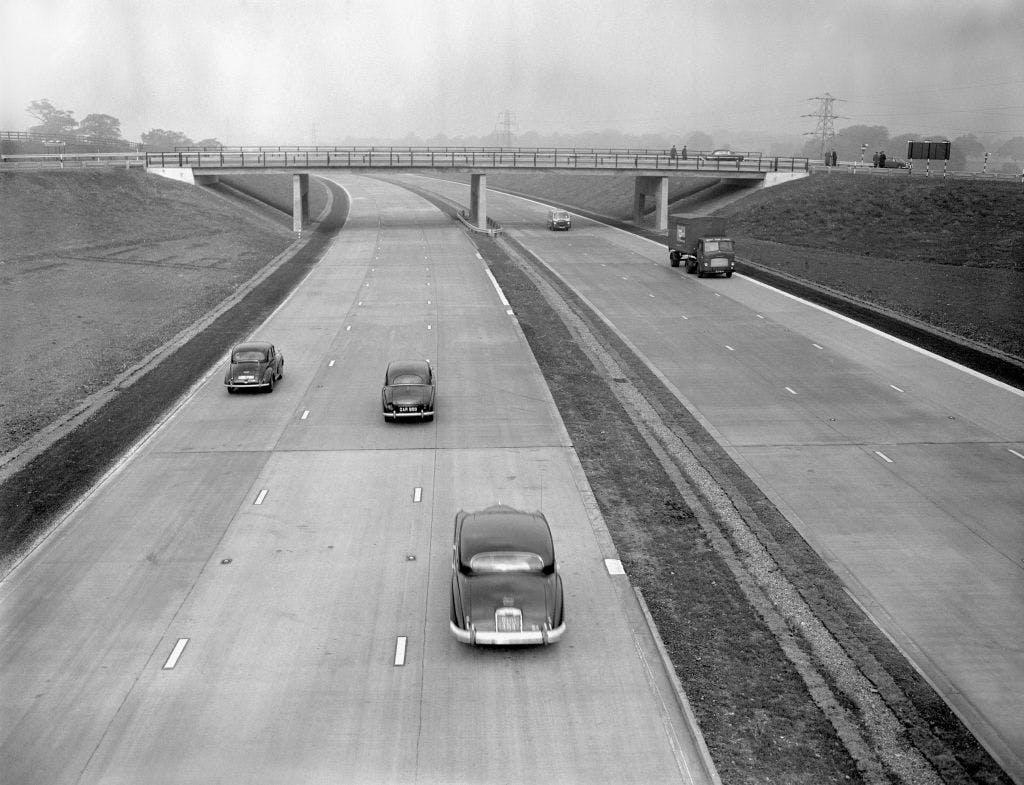
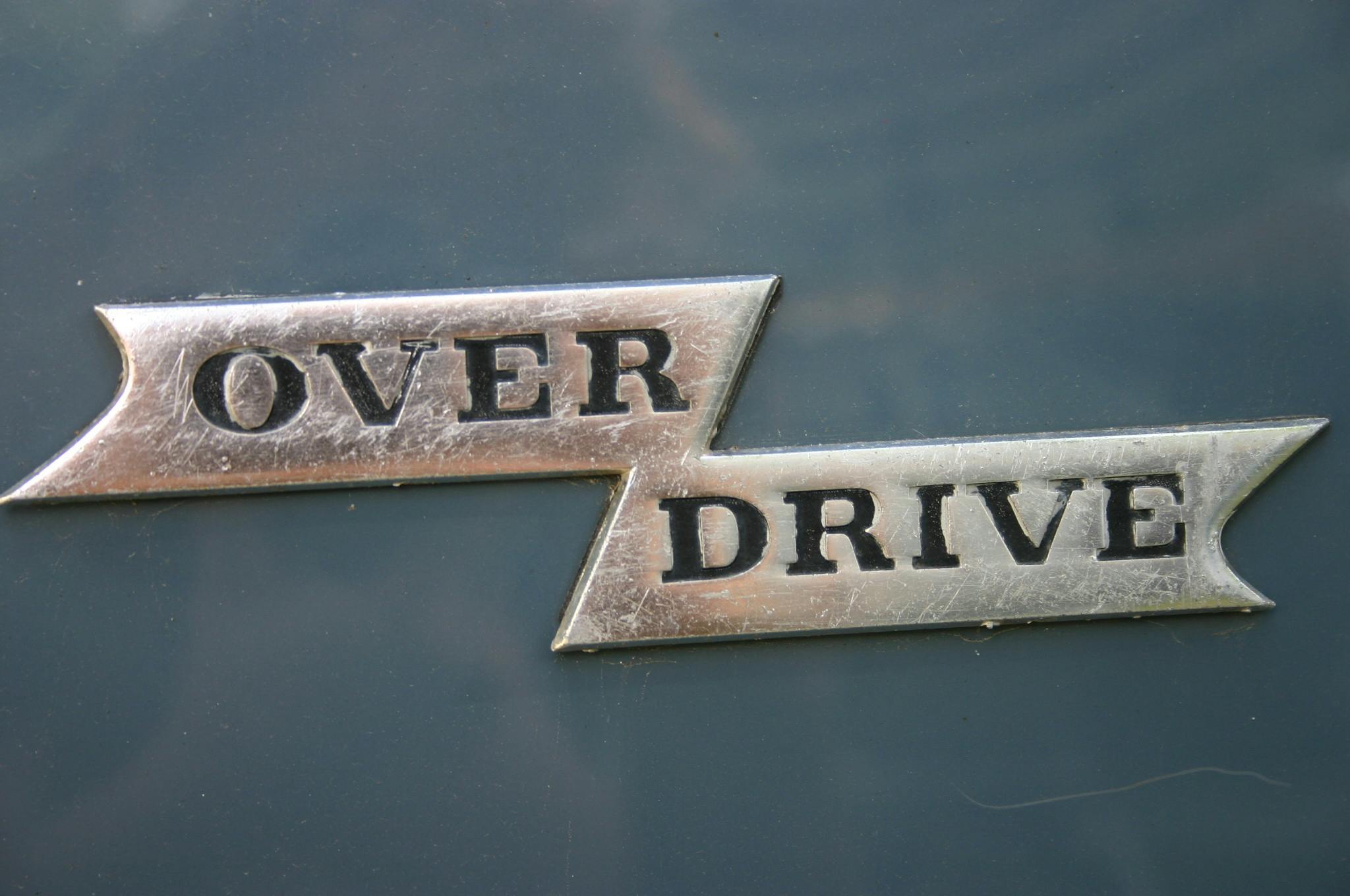
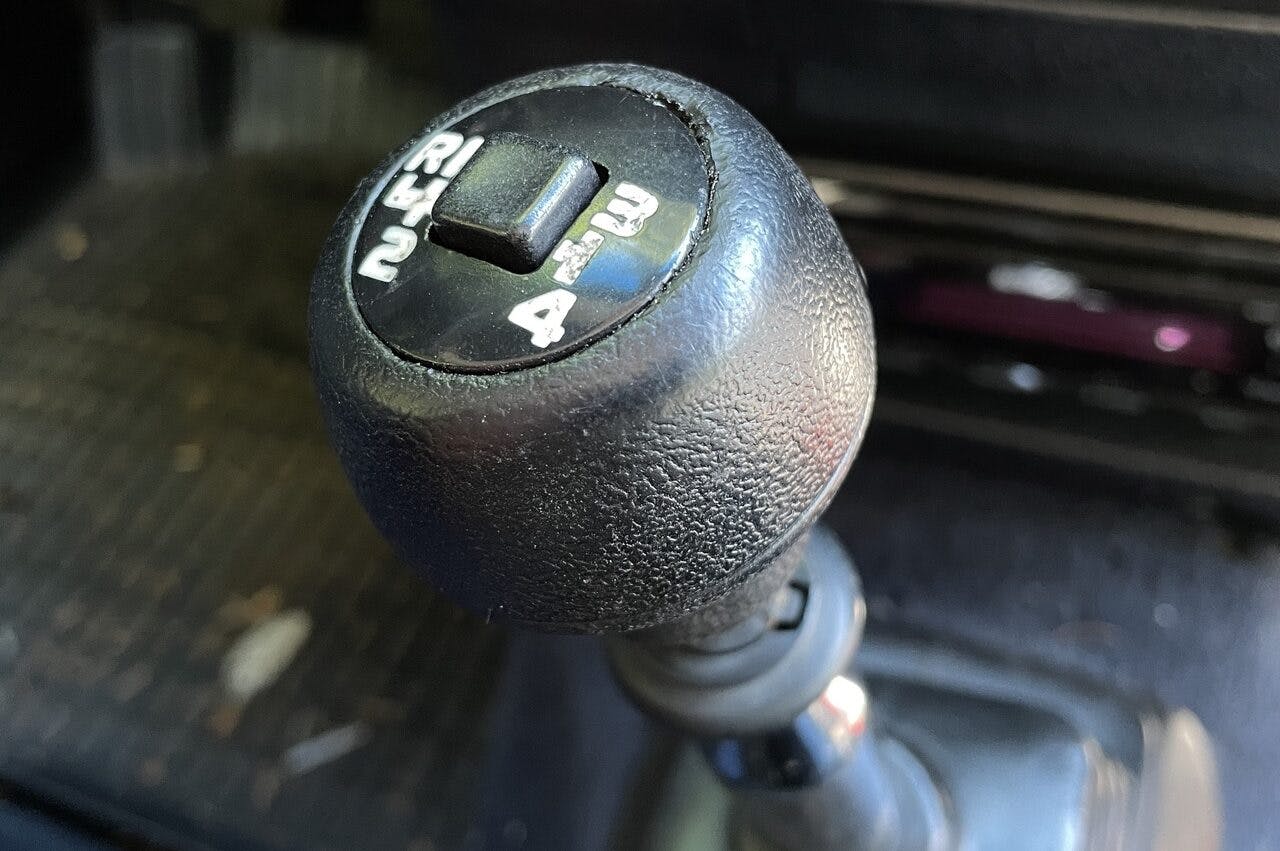





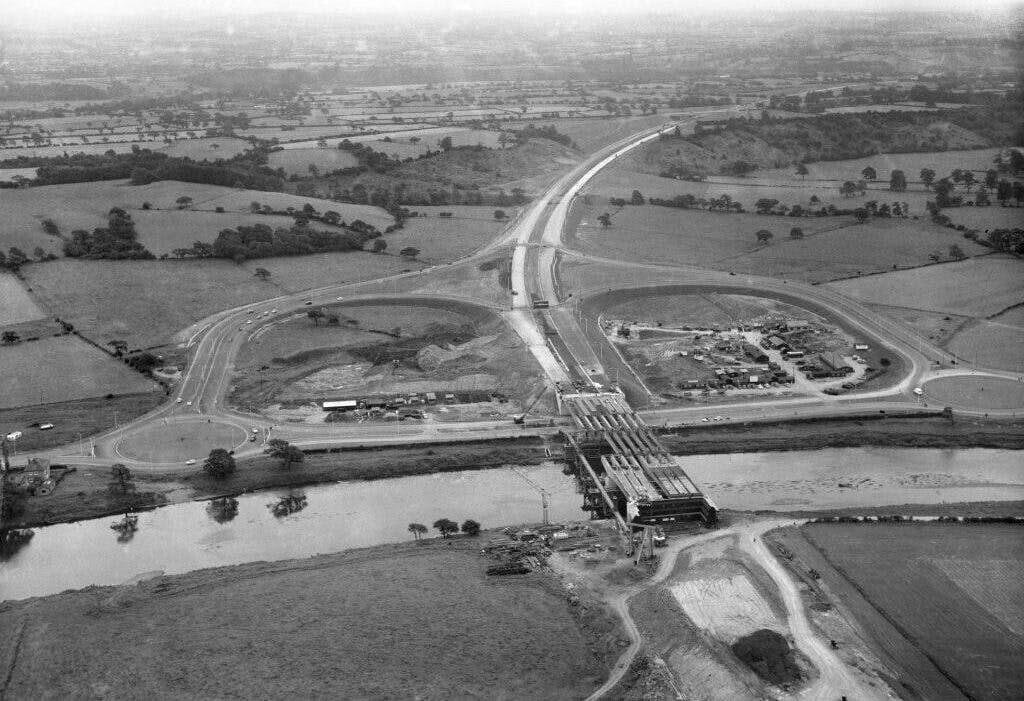




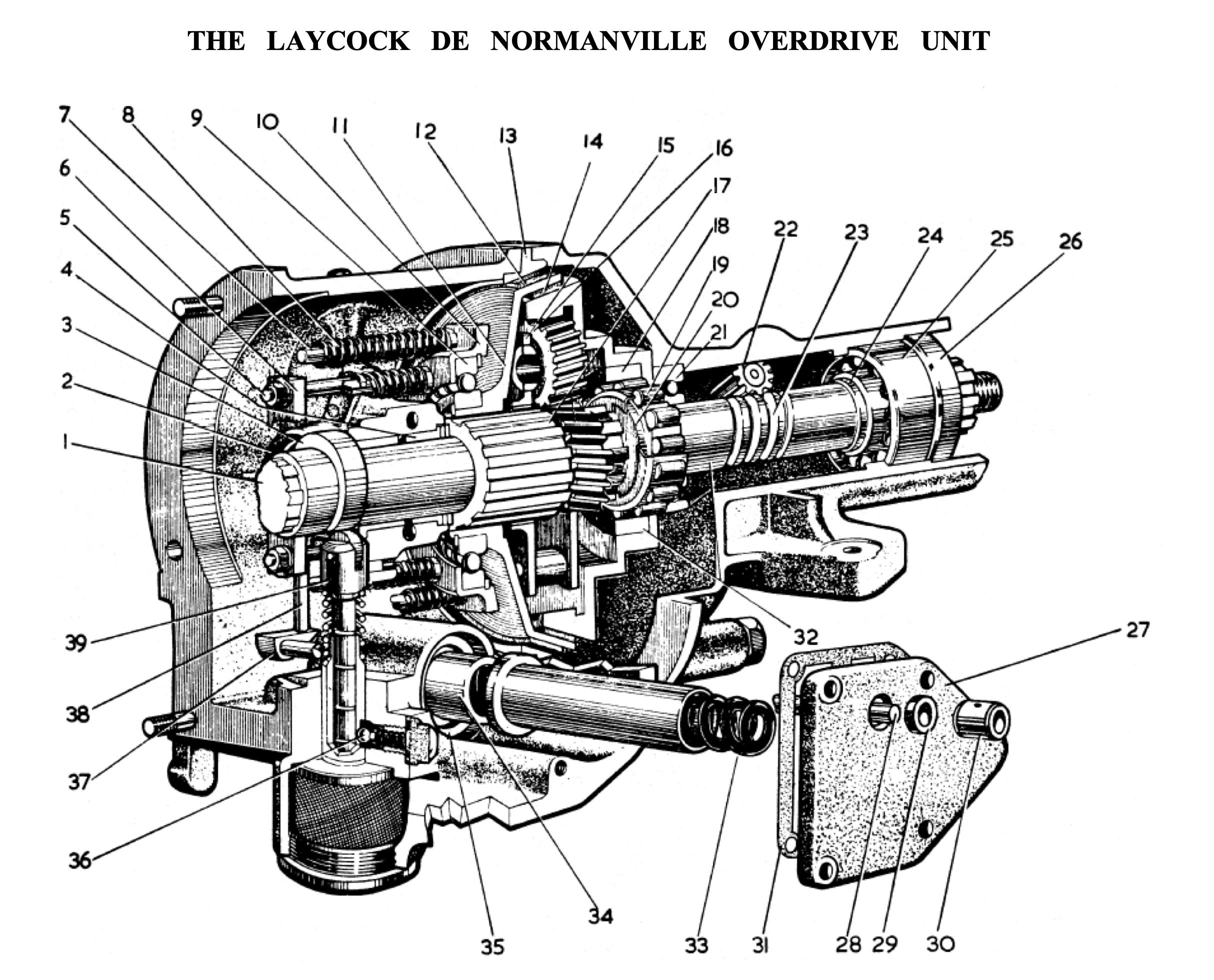
So now, I finally understand the meaning and origin of the term Planetary Gear!
Modern version of the LdN is the Gear Vendors OD. Which is very similar in design and function. GV is still very much in production. GV units can withstand over 1000 hp engines.
GV started with LdN units! They bought leftover LdN units from AMC in the late 70s (AMC used them in some 75 and 76 models, then discontinued due to low sales). They converted them to divorced units that could be used with any trans. Shortly after they got a license to build heavier duty units.
The Borg Warner OD units from the 30s through 60s were similar but engaged in a different way. If you dropped out of OD while under power you could damage the planetary unit of a BW. The shafts on the small gears were the weak link — they could break and jam the OD unit solid. I had that happen once when experimenting with one in my youth. A loud “bang” then no more OD or free wheeling! At least you weren’t stranded. BW used a locking pawl instead of a clutch. I think the cone clutch allows just enough slipping that there isn’t a sudden load on (or off) the gears, not like the hard mechanical engagement of the BW.
I had forgotten about the AMC O/D usage! I recall an AMC (Gremlin?) being tested by a magazine (Consumer Reports?); they found that, at the mandated 55 MPH limit, the 6-cylinder engine lugged due to lack of torque. Perhaps at a higher road speed, the O/D would have proven helpful.
so explain why when my overdrive unit is cold it take anywhere from 5 to 15 seconds to engage when i flip the OD switch. when warm it clicks right in immediately.
by the way, i always depress the clutch when engaging OD so I dont get a clunk
What type and viscosity oil are you using and when was the last time that you cleaned the filters?? I would recommend to remove and clean the filters fill it up with a straight mineral 30 weight oil run it for 100 miles, drain the oil and check the condition of the oil, maybe repeat this two or three times and than fill it up we the recommended straight 40 weight oil. Penrite has a perfect range of gear oils and they have a sales rep in Canada. Sports Car Centre in Edmonton, phone 780 440-9426
The J-Type can operate in all four gears simply by changing the wiring. The problem came in the busy-ness of a stage rally, as you can “lose your place” as to what gear you are in and what gear you want. We tried that for one event only – this driver didn’t have the brain-power to keep track (so said the Navigator). I also added a Red light on top of the dash, hooked to the Reverse light switch – to make sure O/D was off before reversing.
The old Borg-Warner units can be done the same way, just be careful when disengaging not to be under power (use the clutch!) or you can blow the OD unit. The electric connections work the same as with the LdN unit — they ground the ignition momentarily during disengagement so there is no power being applied. Most of the time “split shifting” (using OD in gears other than high) isn’t worth the effort. I found that in typical US three speeds (specifically 1961 Rambler American T-96 with OD) 1+OD is very close to second, and 2+OD is very close to third — too close to be useful. AMC did have a shift system that utilized split shifting for five forward speeds called “Twin-Stick”. The name was a gimick — there was a floor mounted three speed shifter with a shorter stick mounted next to it. The shorter stick just took the place of the pull-out lock-out handle under the dash in a typical installation, it wasn’t used for shifting. The trans, however, wasn’t typical. If shifted without using OD in second gear (OD wasn’t used on first, 2+OD became third…) one would find a big “jump” or “gap” between second and third gears. This was done so that 2+OD would be a viable gear. Shifting up one went through three gears — 1, 2, 2+OD, 3, 3+OD. It couldn’t be down-shifted through all five forward gears though. Shifting was done by using the OD kick-down button on top of the shifter. It was conveniently placed so that it was easy to hit the button when shifting from 2+OD into actual third. Shifts into OD were done the same as with other BW units — just let off the gas and the shift was automatic. Not a fast shifting system, but technically the first US five speed in a road car.
That “Twin-Stick” reminds me of the twin-stick arrangement in some Dodge Colts and Plymouth Champs in the late-1970’s. Testers said it could be fun to “split” shifts, using the two sticks.
What type and viscosity oil are you using and when was the last time that you cleaned the filters?? I would recommend to remove and clean the filters fill it up with a straight mineral 30 weight oil run it for 100 miles, drain the oil and check the condition of the oil, maybe repeat this two or three times and than fill it up we the recommended straight 40 weight oil. Penrite has a perfect range of gear oils and they have a sales rep in Canada. Sports Car Centre in Edmonton, phone 780 440-9426
Had a ’77 Spitfire with LdN overdrive. Worked on 3rd and 4th gears, so you could do split shifts from 3rd into 3rd OD, then 4th and 4th OD. Even with the LdN, the car still turned 3500 on the freeway, could not imagine having that car without one…
After having several Healeys, ’56 through ’60 the overdrive unit was always trouble free. A great asset for high speed service.
Wonderful article. Thank you, Mr. English. I’ve always counseled those looking at a vintage/special interest car with optional overdrive to never buy an example without.
Trivia: The last generation Pierce-Arrows, 1936-38, both 8s and 12s, came standard with overdrive, concentric circles on the speedometer showing rpm in both under- and overdrive.
We use GL1 gear oil in our Warner Gear units, available at any NAPA parts house, who we should always patronize here in the States because they cater to old car folk for the same, and often less, as the trashy chains.
Thanks again. Well done, sir.
I have the overdrive on my Ferrari 250GTE, it works very smoothly, does require some regular maintenance. I owned the enigmatic 4-cylinder (4/12 of a Ferrari 250 engine) ASA 1000GT which had the overdrive on 3rd and 4th gear. Same smooth switching stalk as the GTE. I engage the overdrive while under moderate throttle, to prevent the clunk.
Laycock Engineering – The jokes just write themselves.
My guess is you can’t make any jokes about the company name without getting flagged. But the jokes just write themselves.
I have a LdN unit that I added to my 1963 Morgan +4 with the 2,2 liter TR4 (supercharged) engine some years ago. Turned it from a buzz box at high speed into a smooth dream machine and you could actually have a conversation! Morgans shared a Moss box 4 speed transmission with quite a few Jaguars of that era so sourcing the LdN and making the switch was not too hard and very much worth it. One caveat is that everyone I have seen only recommends 30W non detergent due to the OD pump foaming etc and this grade does very little to protect the transmission gears (they share the same oil) from high pressure under load. looking for something that might be good for both components in the long run…? Well worth it though! So old school and robust!
Good article!
I hac Volvo 544 Sport and am thinking that an od unit addition to the standard 4 speed allow the engine (B18) to greatly reduce rpms at speeds over 55 mph. Thoughts about that? And what od unit would you recommend?